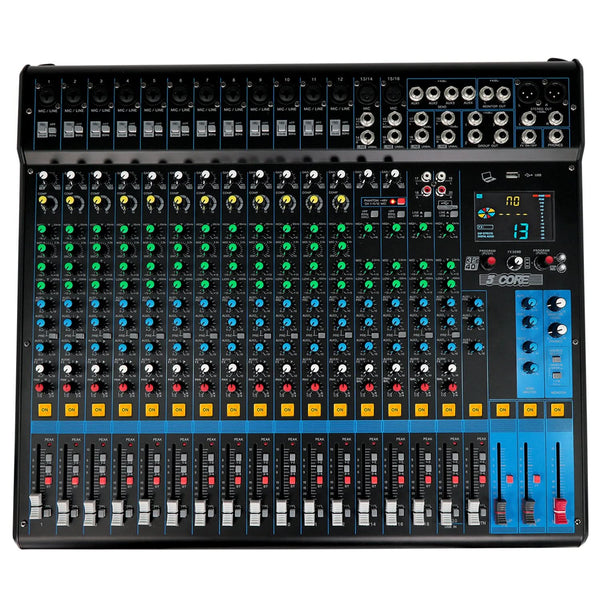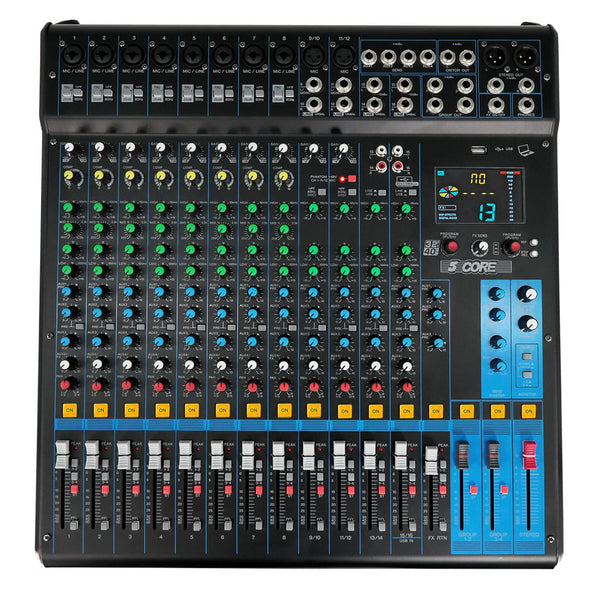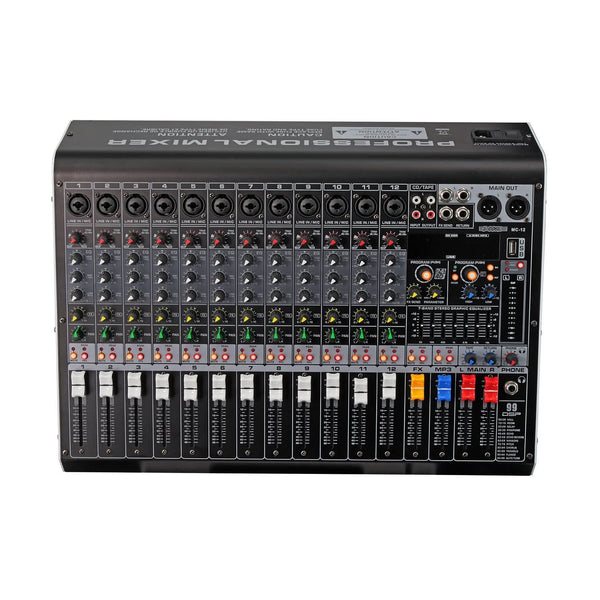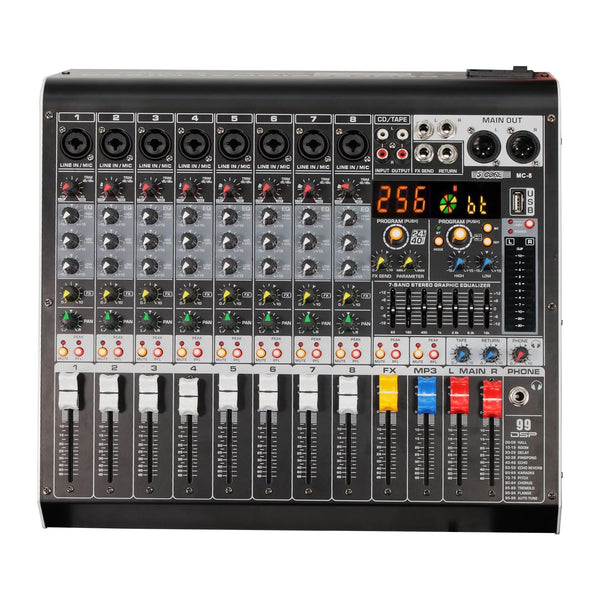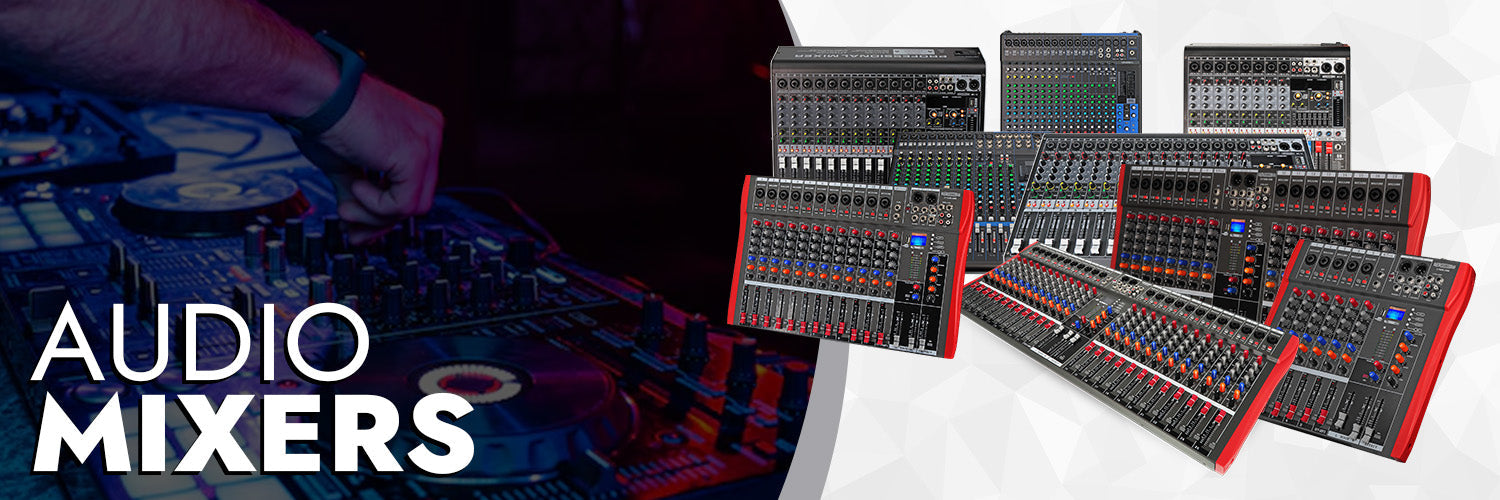
Welcome to a comprehensive guide on audio mixers and DJ mixers, designed to give you a deep understanding of these essential soundboard tools, help you choose the right mixer, and guide you through a quick setup. This content uses authoritative insights to provide precise, data-driven information to optimize your knowledge and sound mixing capabilities.
Introduction to Audio Mixers and DJ Mixers
An audio mixer, also known as a mixing board, DJ mixer board, or soundboard, is a device used to combine, route, and adjust multiple audio signals. It is indispensable in music production, live performances, podcasting, broadcasting, and karaoke setups. The mixer controls volume levels, equalization (EQ), effects, and dynamic processing to shape the final sound output, whether through speakers, headphones, or recording devices. DJ mixers are specialized audio mixers tailored for DJs’ needs with features like crossfaders, cue buttons, and BPM synchronization for seamless track blending and live sound control. Source
What Is an Audio Mixer?
An audio mixer or sound mixer board takes audio input from various sources such as microphones, instruments, and playback devices. It allows the operator to adjust the balance, tone, and dynamics of each input channel, facilitating the creative mix that fits the event or recording context. Mixers come in analog and digital types. Analog mixers provide tactile control with physical knobs and faders, known for producing a warm, natural sound. Digital mixers offer more flexible features, including scene recall, built-in effects, and integration with computer-based audio workstations for advanced production workflows.
How to Choose the Right Audio Mixer
Choosing the best audio mixer or DJ mixer depends on your specific needs, budget, and setup. Key considerations include:
-
Number of Channels: Decide how many input sources you need to handle simultaneously. Solo podcasters require fewer channels, whereas bands and live events often need 16 or more channels for microphones, instruments, and playback devices.
-
Inputs and Outputs: Look for professional XLR microphone inputs, line inputs for instruments, and digital USB connections to link mixers with laptops or recording devices.
-
Built-in Effects and EQ: Effects such as reverb, delay, compression, and parametric EQs enhance sound without external gear. Some mixers also have auxiliary sends for monitors and external effects.
-
Preamps and Phantom Power: High-quality microphone preamps are critical for clear, noise-free sound, especially with condenser mics requiring 48V phantom power.
-
Portability and Size: Ensure the mixer is convenient for your intended use—compact for mobile setups or larger for studio and comprehensive live sound control.
-
Analog vs. Digital: Analog mixers offer simplicity and a classic sound signature, while digital offers presets, extensive control, and software integration.
-
Brand and Reliability: Investing in trusted, high-quality brands ensures durability and consistent performance. 5 Core is recognized for producing reliable, versatile audio mixers with advanced features.
Quick Setup Guide: DJ Mixer to Speakers & Laptop
-
Connect Inputs: Plug your microphones, instruments, or audio sources into the mixer channels using appropriate cables (XLR or 1/4”).
-
Connect Outputs: Link the main outputs of the mixer to your speakers or PA system via XLR or TRS cables.
-
USB Connection: Connect the USB output to a laptop for digital recording or streaming.
-
Power On: Turn on the mixer and speakers in sequence to avoid sound spikes.
-
Adjust Levels: Use channel faders and master volume controls to set your desired sound mix.
-
Use Effects and EQ: Apply built-in effects and EQ settings to enhance your audio.
-
Monitor Sound: Use headphones or stage monitors to hear the mix clearly and adjust live accordingly.
FAQ About Audio Mixers and DJ Mixer Boards
-
Question: What types of DJ mixers suit different styles?
Answer: DJ mixers vary based on the style of DJing. Analog mixers suit traditionalists who prefer hands-on control and a warm sound. Digital mixers are ideal for electronic, club, and software-integrated DJing due to their versatility and effects options.
-
Question: Should I choose an analog or digital mixer?
Answer: Analog mixers are simple, reliable, and favored for rich sound quality but have fewer features. Digital mixers offer presets, automation, effects, and compactness but can have a steeper learning curve.
-
Question: How important are inputs and outputs?
Answer: The number and type of inputs and outputs matter for connectivity and future expansion. Make sure your mixer supports all your devices like mics, turntables, laptops, and has USB ports if you want easy recording or software integration.
-
Question: What common on-board effects should I look for?
Answer: Effects like reverb, echo/delay, filter, flanger, phaser, and chorus are popular for enhancing and creatively manipulating sound during mixing.
-
Question: How well should the mixer integrate with DJ software?
Answer: Good integration with major DJ software like Serato, Traktor, and Rekordbox enhances control and performance. This is crucial for digital DJ setups to access software features smoothly.
-
Question: What are the typical price ranges for DJ mixers?
Answer: Entry-level mixers range from affordable prices with basic features, mid-range offers more channels and effects, and high-end mixers provide professional-grade features, quality components, and robust build.
-
Question: Are additional features like MIDI mapping and built-in sound cards important?
Answer: Yes, MIDI mapping allows control over software functions from the mixer, and built-in sound cards eliminate the need for external audio interfaces, improving workflow and sound quality.
-
Question: Can DJs mix different music genres effectively?
Answer: Yes, mixing across genres is done by matching tempos, keys, and using creative transitions and effects to maintain flow and audience engagement.
-
Question: Is it necessary to use headphones while mixing?
Answer: Headphones are vital for cueing and beatmatching, though experienced DJs may occasionally mix without them depending on the situation.
-
Question: How do DJs create smooth transitions between tracks of varying energy?
Answer: DJs use EQ mixing, gradual tempo adjustment, and creative techniques such as using acapellas or instrumental breakdowns to ensure seamless transitions.
Conclusion
Selecting the right audio mixer or DJ mixer is crucial for achieving professional sound quality, flexibility, and creative control in audio production and live performance. Understanding your specific needs—such as the number of channels, input/output options, preferred effects, portability, and software compatibility—guides you toward the right choice. Both analog and digital mixers have their strengths, with analog favored for simplicity and warmth, and digital prized for versatility and advanced features.
By carefully considering budget and desired capabilities, you can ensure your investment supports your artistic goals and technical requirements. Whether for live DJ sets, studio recording, podcasting, or karaoke, a well-chosen mixer enhances your audio experience by providing precise control and rich sound, empowering you to deliver your best performance every time.
Author Bio-
Alex Even
Hi, I’m Alex Even. I’ve been working in the pro audio industry for over 15 years, specializing in everything from studio recording setups to live sound systems. Whether it’s fine-tuning a PA DJ system, choosing the right microphone, drum stool, keyboard bench or setting up a home studio, karaoke setup, I’ve spent years helping musicians, audio engineers, and content creators get the sound they’re looking for. I’m passionate about making audio technology easy to understand and even easier to use—because great sound should be accessible to everyone.



